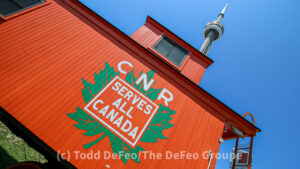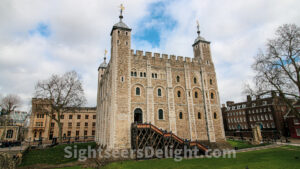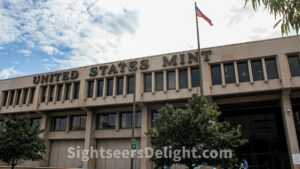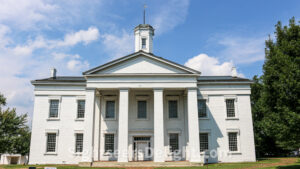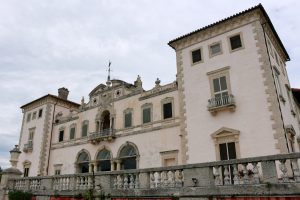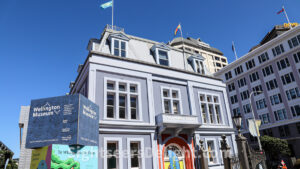The First Toronto Post Office is the only surviving example of a post office that served as a department of the British Royal Mail in Canada. The Georgian style building dates to 1833 before York became the city of Toronto and is also sometimes referred to as the Fourth York Post Office. Today, the museum, which is also home to the Town of York Historical Society, includes a range of exhibits about the history of mail in Canada and the building itself.
The Toronto Railway Museum opened in 2010 in a portion of the historic John Street Roundhouse in the heart of Toronto. Canadian Pacific Railway built the roundhouse, designated a National Historic Site of Canada in 1990, in 1929-31; it is today the only remaining roundhouse in downtown Toronto. The museum is home to locomotives, rolling stock and railroad artifacts that interpret the history of railroads in the Toronto area and Canada. The museum, which is part of the 17-acre Roundhouse Park and sits in the shadows of the Rogers Centre and CN Tower, has also relocated several historic buildings to its grounds, including Don Station, which Canadian Pacific Railway built in 1896 and original at the Don River and Queen Street East.
The Tower of London is perhaps the single most famous London landmark, best known for its history as a jail. Today, the tower, which dates to 1078, is one of London’s most popular tourist attractions and is home to the Crown Jewels. The tower, which sits on the north bank of the River Thames, has been besieged at various times and controlling the edifice has been critical to control of England. Its peak use as a prison was the 16th and 17th centuries. Among the many prominent people “sent to the Tower” are Anne Boleyn, Sir Walter Raleigh and Elizabeth Throckmorton.
The Tucson Museum of Art and Historic Block was founded 1924 in the El Presidio Historic District of downtown Tucson. The 74,000-square-foot museum features permanent and traveling exhibitions of Modern and Contemporary, Native American, American West, Latin American, and Asian art. The main museum occupies a contemporary building, while the museum’s Historic Block of 19th and 20th century adobe and Mission Revival-style buildings, encompassing an entire four-acre city block, includes the John K. Goodman Pavilion of Western Art, which displays the Museum’s notable art of the American West collection, the Museum restaurant Café a la C’Art, and other exhibition and studio spaces.
85701
Ty Cobb has a tough legacy, to say the least. He is one of the greatest players to ever take the field. He holds the all-time career batting average record with a .366 average, and he was selected to the Baseball Hall of Fame in 1936 as part of the inaugural class. The Ty Cobb Museum in his hometown of Royston, Ga., puts Cobb in an interesting light. The museum helps tell the story of Cobb and how he helped shape his home town, an impact that is felt even today.
The Philadelphia Mint has been a staple of the city since 1792 when the nation’s first-ever Mint opened here. At the time, the city was the nation’s capital. The Mint has been housed in its current building at the intersection of N. 5th and Arch streets since 1969. Visitors can take free self-guided tours and see the coining operations from a walkway 40 feet above the factory floor.
19106
The USS Yorktown, an Essex-class aircraft carrier, is a National Historic Landmark moored in Charleston harbor. The vessel was commissioned in 1943, and in the 1950s, it was converted under the SCB-27A program as an attack aircraft carrier, CVA-10. An angled deck was added in 1955. The USS Yorktown was decommissioned in 1970 and donated to the Patriots Point Development Authority in 1975. It was relocated to Charleston and has remained the centerpiece of Patriots Point Naval & Maritime Museum. In the U.S. Navy donation contract, South Carolina indicated the state planned to preserve and exhibit the vessel.
29464
The Vandalia State House is the fourth statehouse of Illinois and is the oldest surviving capitol building in the state. The structure served as the capital from 1836 until 1839, when it moved to Springfield. The two-story painted brick structure later served as a courthouse and was converted into a state monument in 1933.
62471
Businessman James Deering built Villa Vizcaya between 1914 and 1922. The house served as his winter residence until he passed away in 1925. Currently, Miami-Dade County owns the property in the Coconut Grove neighborhood. Besides exploring the 34-room house, visitors can also tour the 10-acre gardens on the premises. Several movies, including Bad Boys II, have featured the house.
For anyone interested in learning more about the history of Wellington, the Wellington Museum is an absolute must. The centerpiece of the museum is the building itself. The museum is located in the Bond Store, which sits in the heart of Wellington’s waterfront district. Leading architect Frederick de Jersey Clere designed the 1892 heritage building. The museum features a mix of stories about the community of Wellington and maritime history, including information about the 1968 Wahine disaster, a deadly ferry disaster that claimed the lives of 53 passengers.


